Navigating Winter Roads: A Guide to Teen Drivers for Safe and Sound Travels
The thrill of earning your driver’s license is a rite of passage, but with winter’s icy embrace comes a new set of challenges on the road. As a new teen driver, it’s important to equip yourself with the knowledge and supplies to conquer winter driving safely. In this article, we’ll delve into essential tips for navigating winter roads and the must-have supplies to keep in your car.
Safety Tips for Winter Driving
1. Slow and Steady Wins the Race: Reduce your speed and maintain a safe following distance. Slower speeds give you more time to react to unexpected situations.
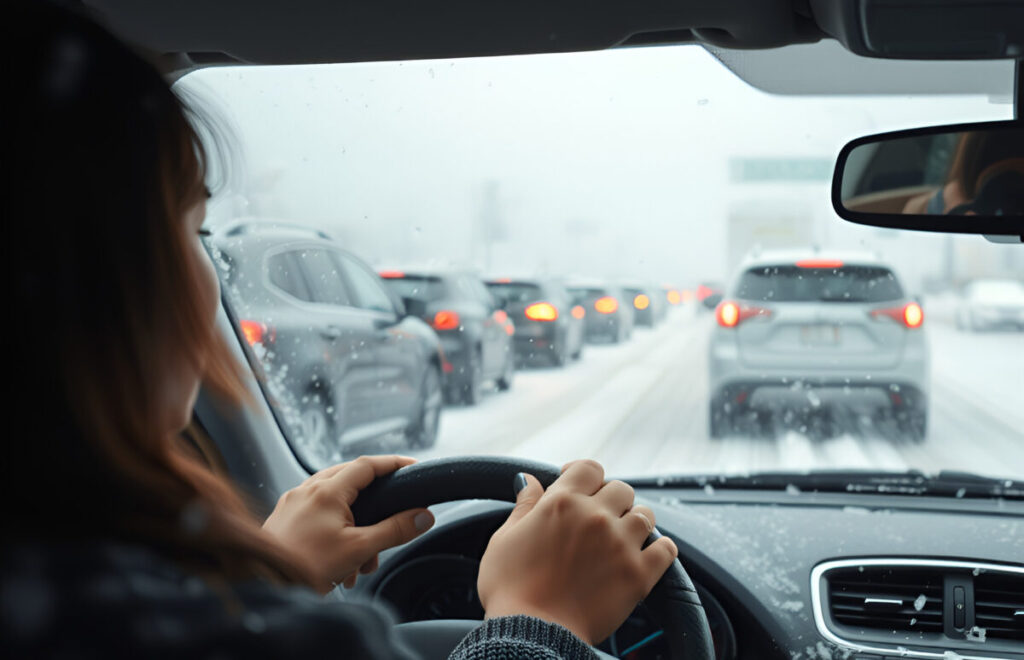
2. Mind the Ice: Be particularly cautious on icy patches, bridges, and overpasses. These areas tend to freeze first and can catch even experienced drivers off-guard.
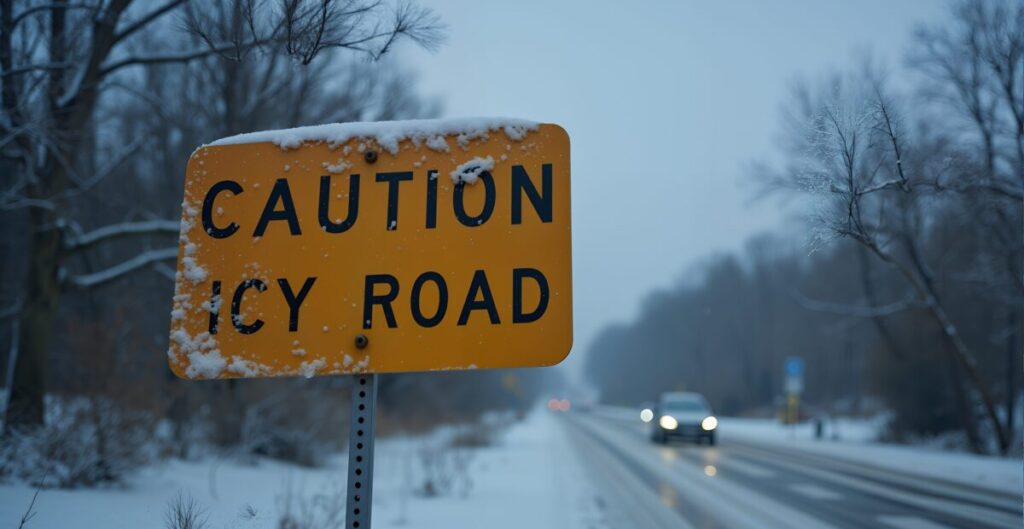
3. Smooth Movements: Avoid sudden acceleration, braking, or steering. Smooth, gradual movements help maintain control on slippery surfaces.
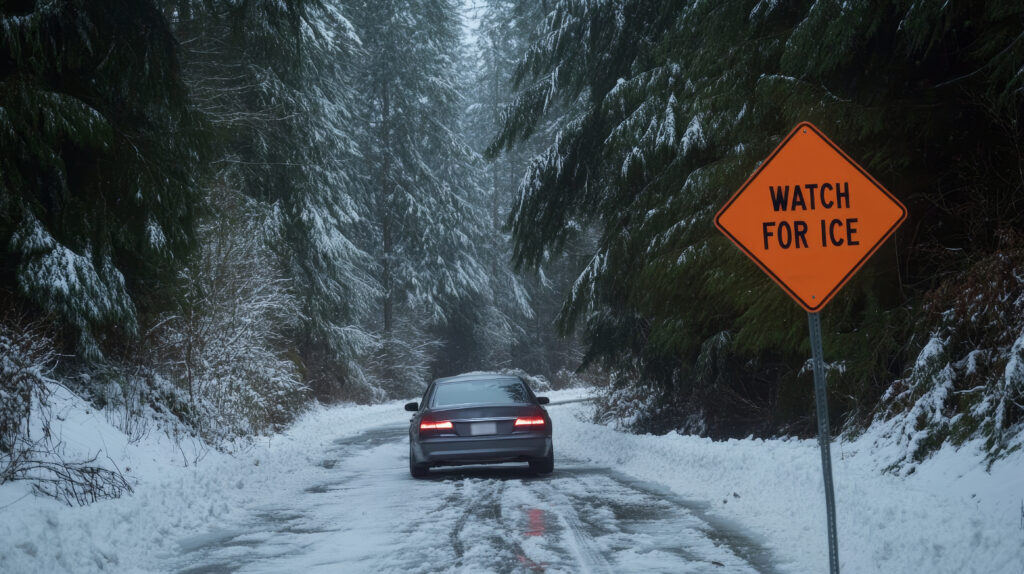
4. Use Your Lights: Turn on your headlights even during the day, especially in low visibility conditions. It helps other drivers see you better.
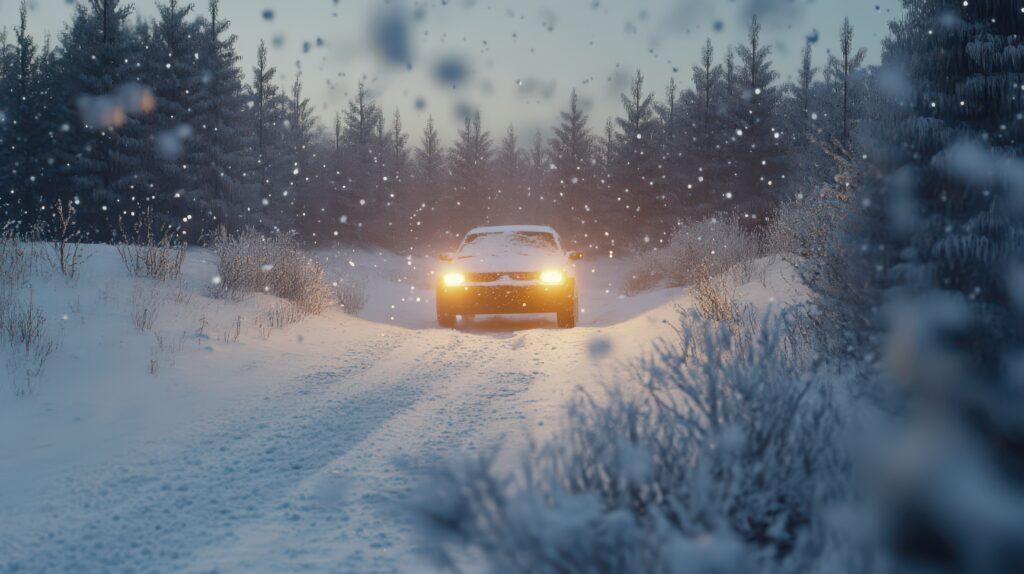
5. Know Your Brakes: Learn how to use your vehicle’s anti-lock brakes (ABS) if equipped. Apply firm, continuous pressure and let the ABS do its job.

6. Don’t Rely on All-Wheel Drive: While all-wheel drive can provide better traction, it doesn’t guarantee invincibility on icy roads. Drive cautiously regardless of your vehicle’s capabilities.
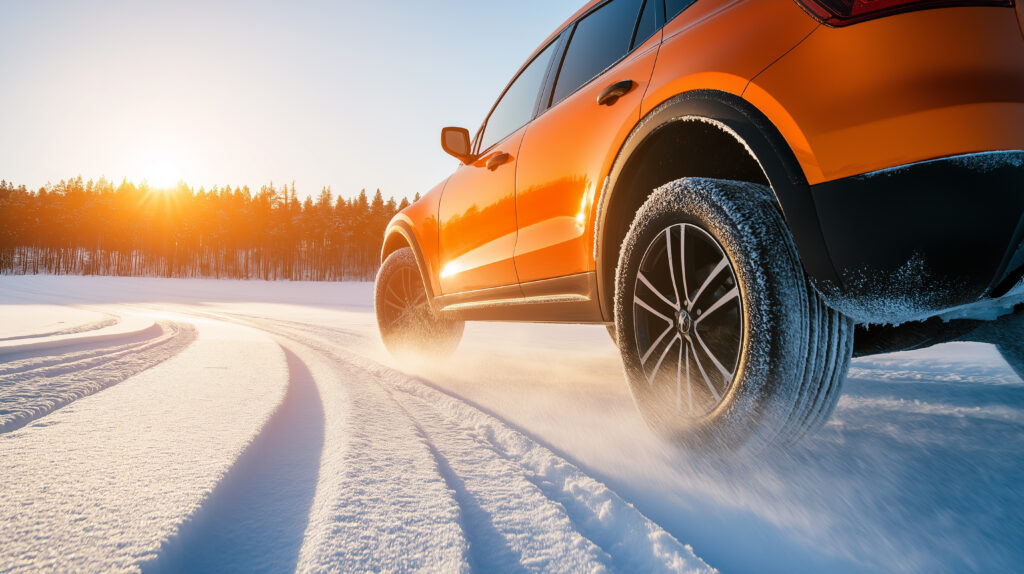
7. Ensure Vehicle is Maintained: Keep up to date on oil changes, ensure battery is functioning properly, swap out old windshield wipers and perform regular tune ups.
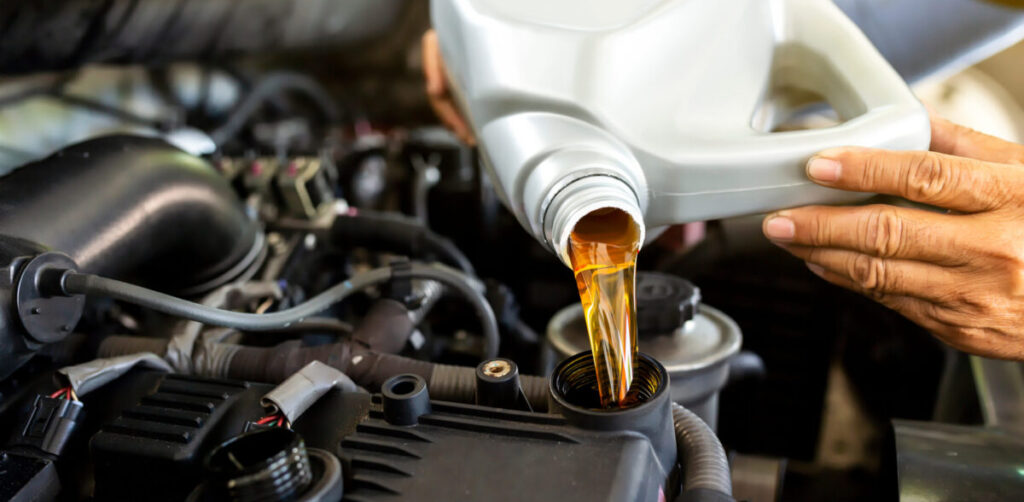
8. Check Tire Pressure Regularly: This will ensure optimal handling as well as improve gas mileage.
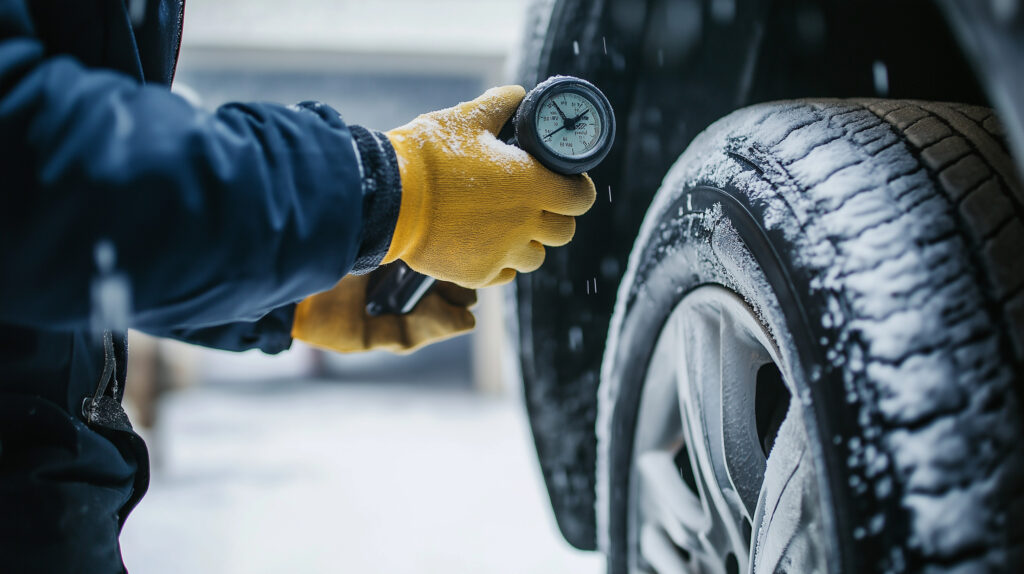
9. Keep Gas Tank Full: Avoid driving around on less than a quarter tank of fuel. You never know when an accident will result in heavy traffic or road closures leading to you running out of fuel in bad weather without gas stations nearby.
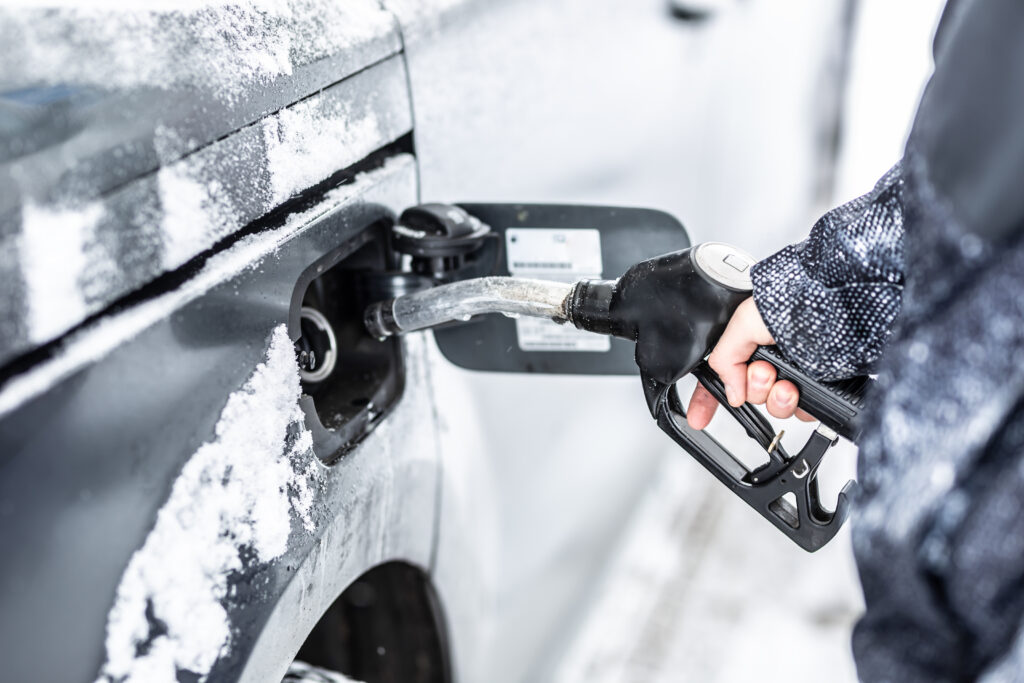
10. Plan Ahead: Check weather forecasts and road conditions before leaving. If conditions are unsafe, consider delaying your trip. Be sure to check weather conditions for when you’re departing your destination to come back home as well. It might look perfectly clear in the moment, but conditions can quickly deteriorate when you’re planning on driving home.
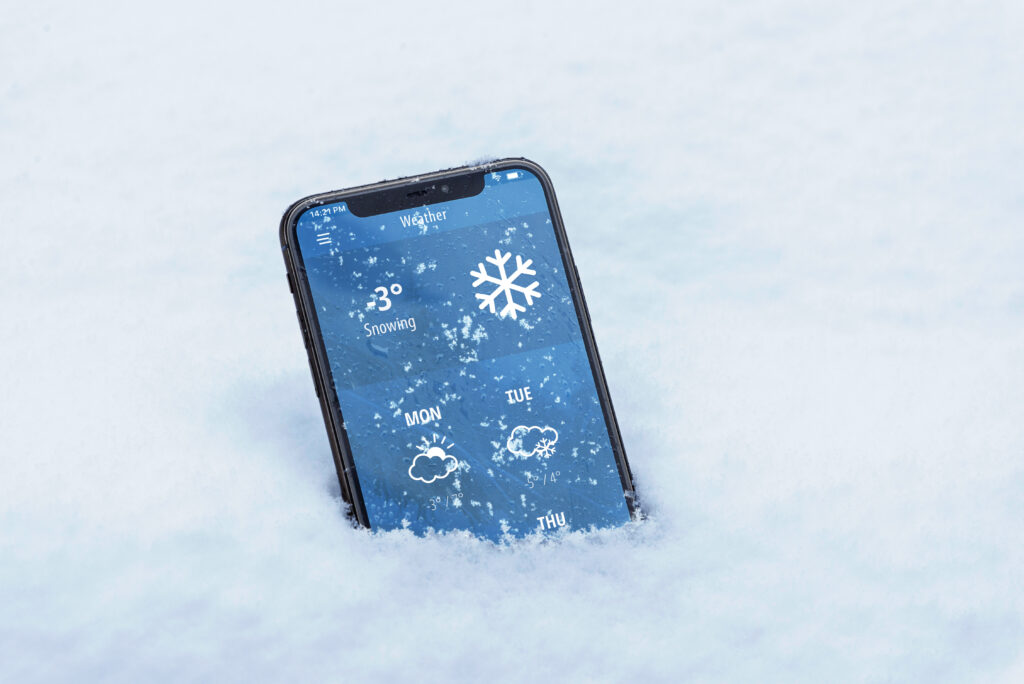
11. Communication: Let someone know your route and estimated arrival time, especially if you’re driving in challenging conditions.
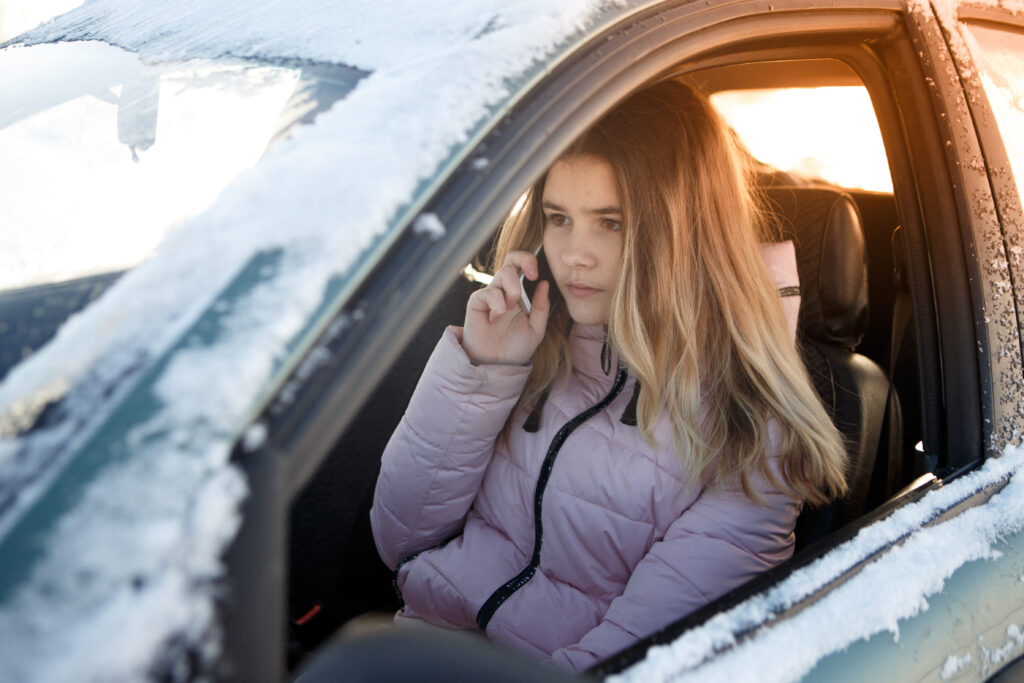
12. Stay Calm: If you skid, stay calm and steer in the direction you want to go. Avoid over-correcting, which can make things worse.
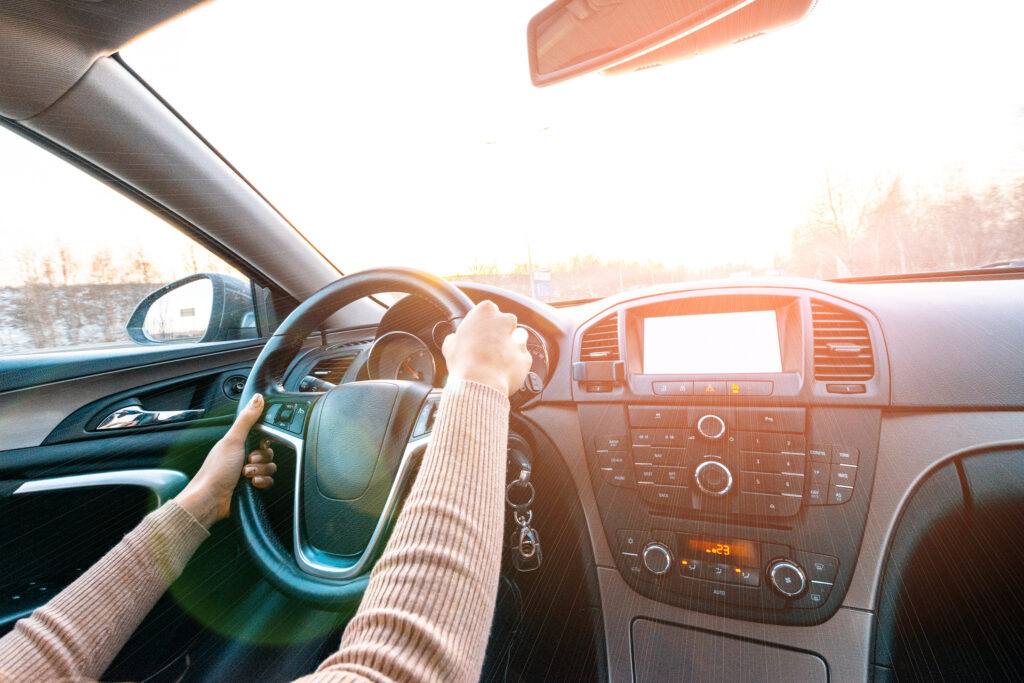
Essential Supplies for Winter Driving
1. Ice Scraper and Snow Brush: Clear your windows, mirrors, and roof from snow and ice before hitting the road for optimal visibility.
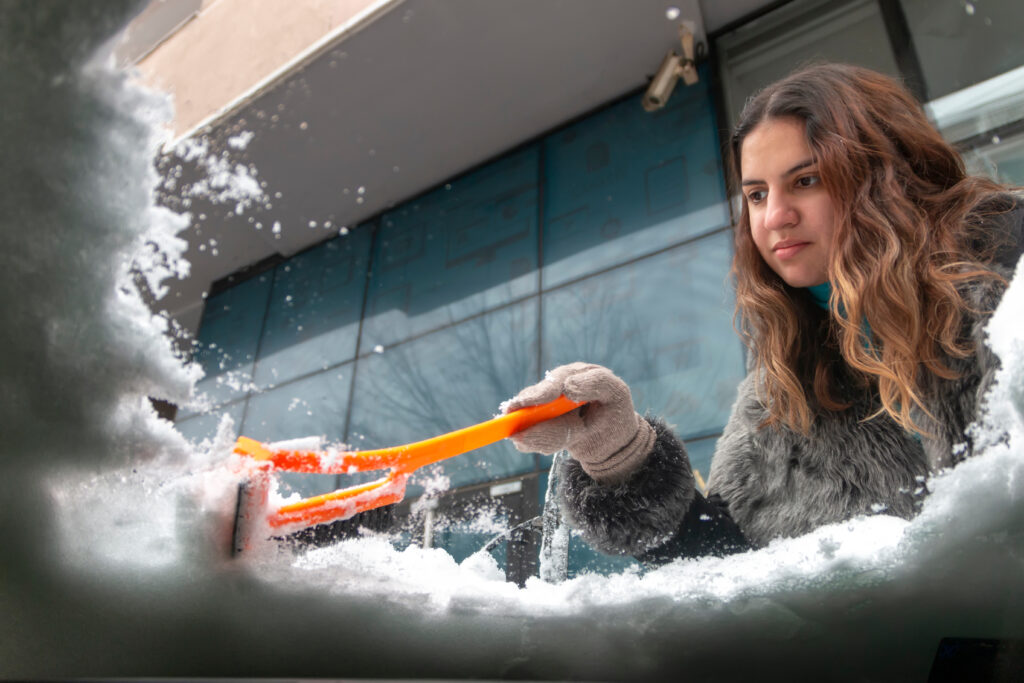
2. Winter Tires: If you live in an area with heavy snowfall, consider investing in winter tires for improved traction.
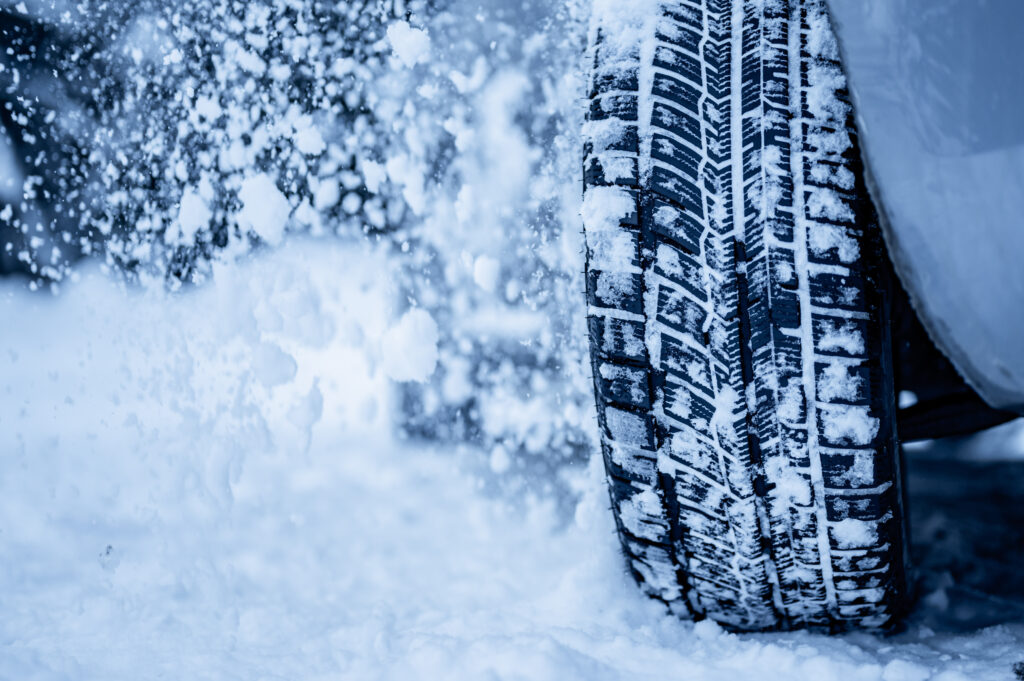
3. Emergency Kit: Prepare a kit containing essentials like blankets, gloves, a flashlight, a first aid kit, non-perishable snacks, and water.
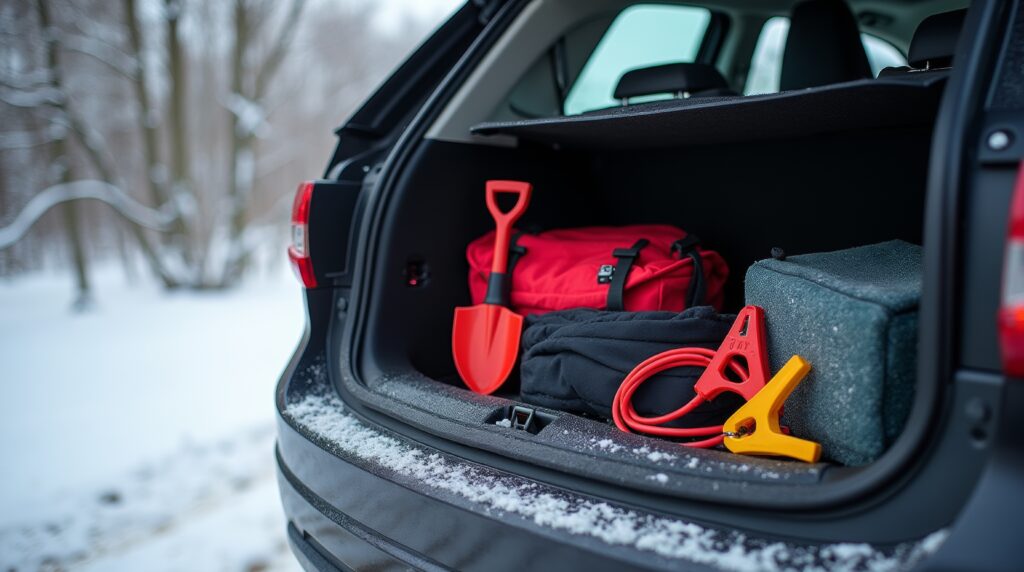
4. Jumper Cables: Cold weather can be hard on batteries. Jumper cables can be a lifesaver if your battery dies.
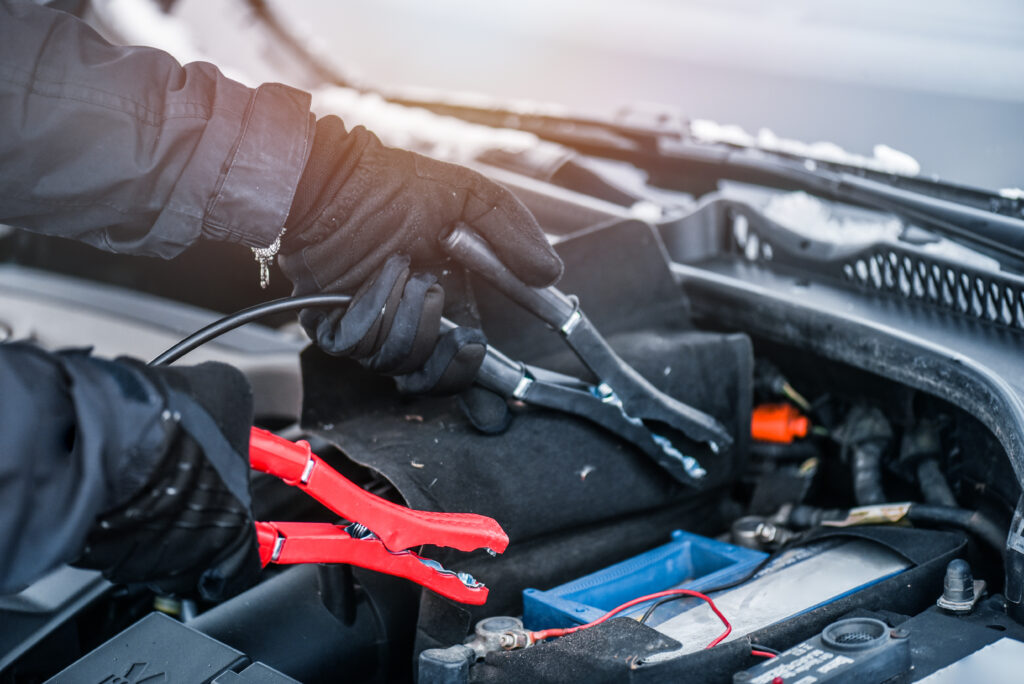
5. Traction Aids: Keep sand, kitty litter, or traction mats in your trunk to help your tires gain grip on slippery surfaces. Remember that if you do get stuck, you can place your rubber floor mats under the tire to get traction and get out of a slippery situation.
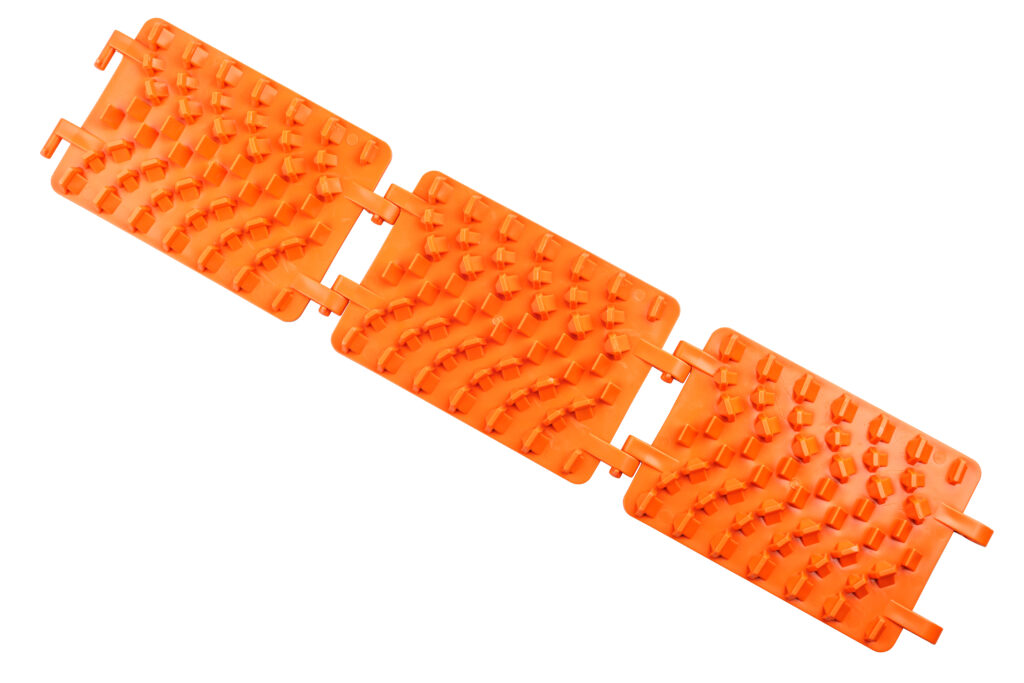
6. Cell Phone Charger: Ensure your phone is charged before each trip, and keep a car charger handy. You can even keep an old phone and charger as a spare in your car so that if your phone were damaged you could still call 911 even if the phone doesn’t have an active SIM card.
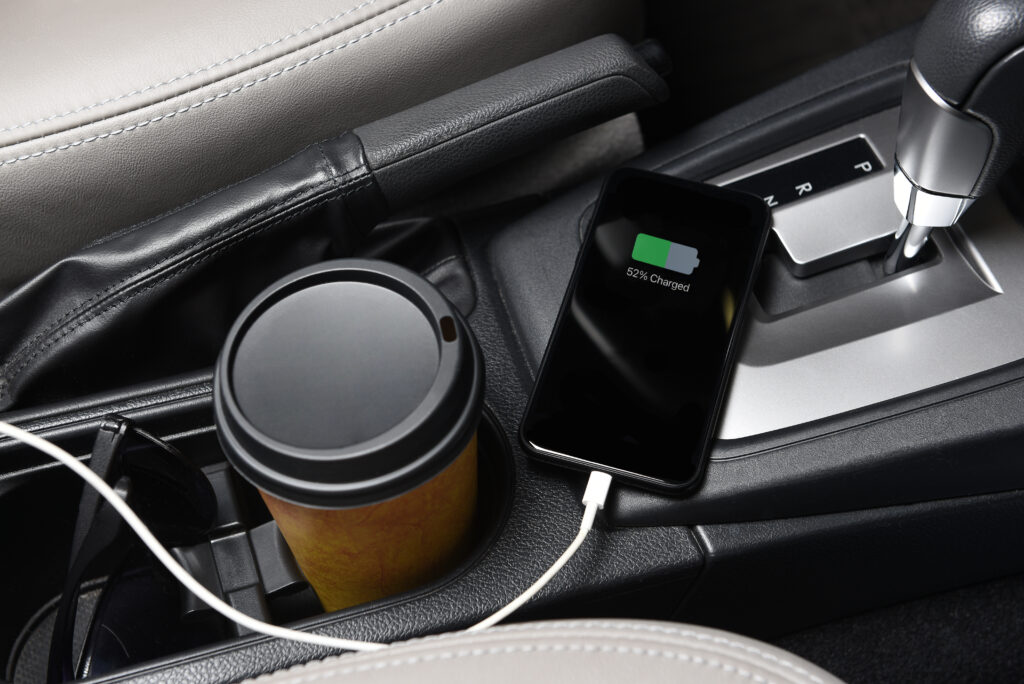
7. Reflective Triangle or Flares: These can alert other drivers if you find yourself stranded on the side of the road.
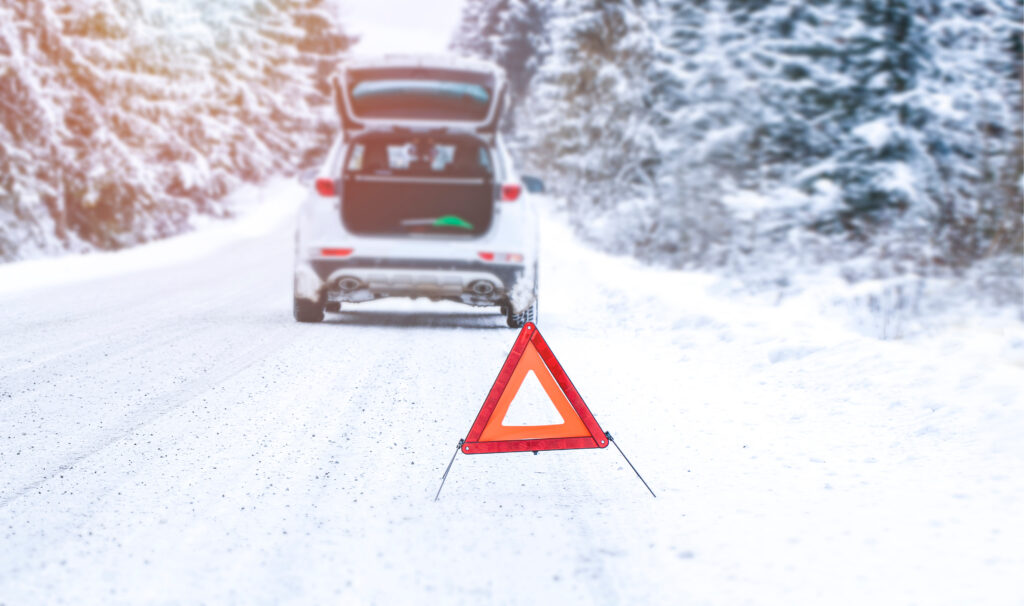
8. Blanket and Extra Clothing: In case you need to wait for help, staying warm is crucial. Keep an extra hoodie, warm gloves and a hat in the trunk.
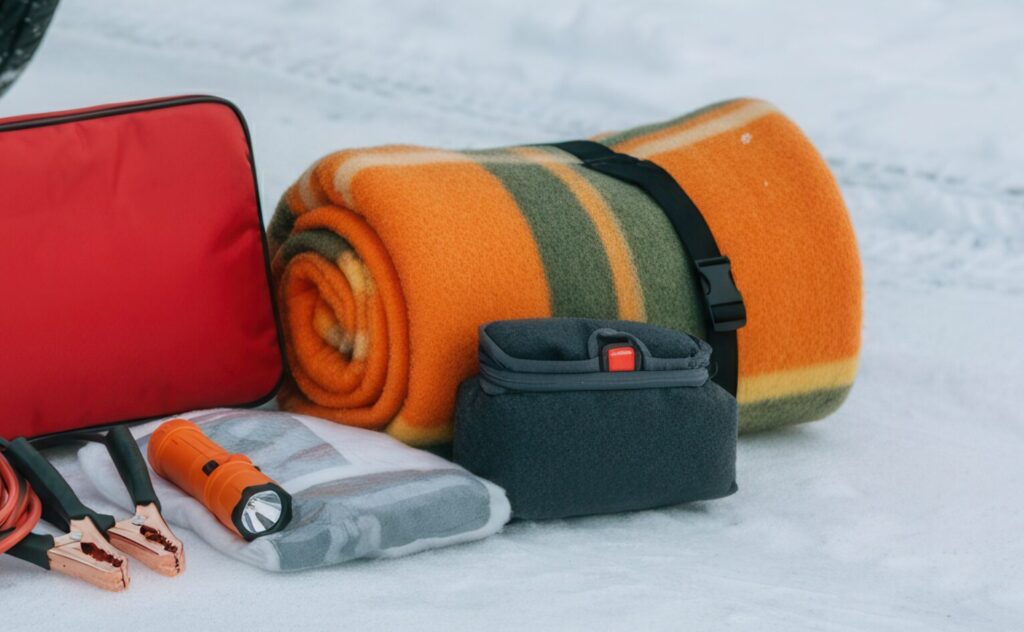
9. Extra Bottle of Windshield Washer Fluid: It’s hard to predict when you will run out. It’s good to have extra on hand to refill on the go so you can maintain proper visibility.
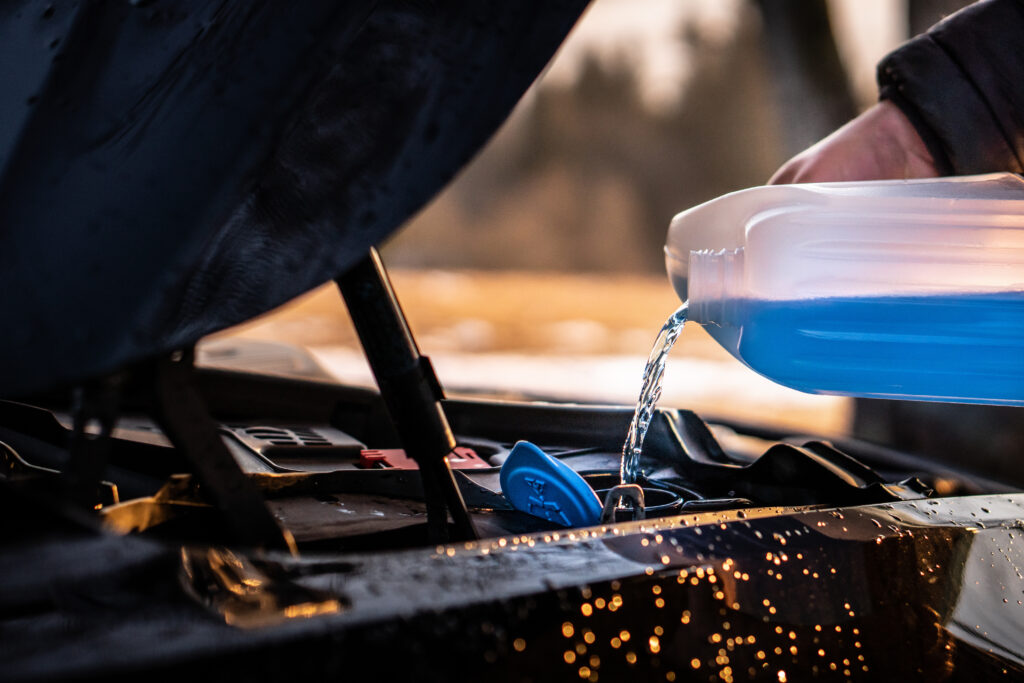
10. Cash: A good item to include in your emergency kit. Keeping an extra $20 in your car can be a life saver if you run out of gas or need something and credit/debit machines aren’t working

As a new teen driver, mastering winter driving skills is essential for your safety and the safety of those around you. By following these tips and keeping the recommended supplies in your car, you’ll be better equipped to face the challenges of winter roads. Remember, your focus should always be on staying safe, even if it means taking things slow and steady when the winter weather takes center stage.
Note that these lists are not meant to be all-inclusive.